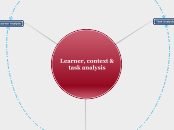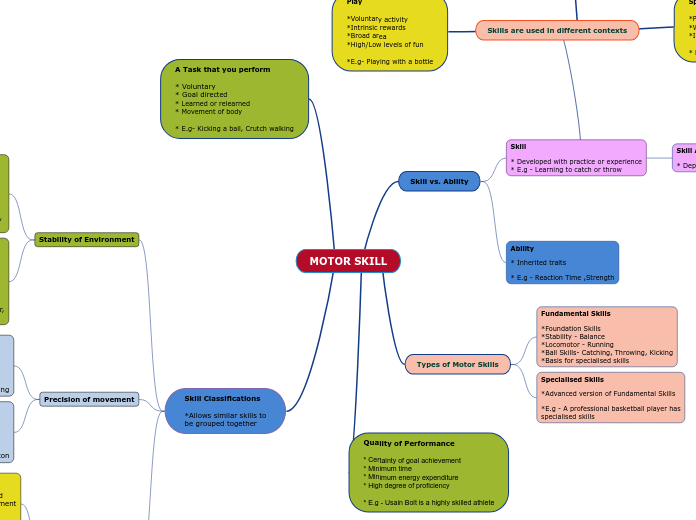Learner, context & task analysis
Learner Analysis
Adult learners
They have some characteristics such as
Less flexible
Independant
Time is important
Highly motivated
Sepcific entry characteristics
Skills learners should have to benefit from the training
Computer skills
Reading skills
Learners with disabilities
Learning
Speech
Hearing
Personal & social characteristics
Talents
Expectations
Aptitude
Motivation
Academic information
Scores
Courses taken
Educaion
Learning styles
Kinesthetic
Physical
Visual
General characteristics
Experience
Age
Gender
Context Analysis
Three types of contexts
Transfer context
Creating tools & resources to apply the new skills
Creating environment that promotes application of new knowledge
Instructional physical context
Transportation
Equipment
Seating
Lighting
Timing
Orienting context
Learner's perception of accountability, i.e. do they have to master the course?
Learner's perception of the usefulness of the training
learner's goals for taking the training
It is important because:
Context can inhibit or facilitate learning
Learning doesn't take place in vacuum
Task Analysis
It identifies the content not the sequence
3 Techniques to conduct task analysis
Critical incident method
It identifies a list of tasks the learner needs to master
It identifies what works and what does not work
e.g. Air force pilots
It identifies commonalities of different approaches
e.g. Salesperson
High-pressure approach
Calm approach
Procedural analysis
It follows a checklist
Cognitive
Unobservable tasks, information processing analysis
Behavioral
Observable steps required to complete a task
What cues inform the learner that there is a problem?
What does the learner need to know to do the step?
What does the learner do?
Topic analysis
Identifies the content of instruction
Identifies facts, concepts & principles needed for instruction
Gives information that falls into various content structures
Attitude
i.e. Predisposition towards a behavior
Procedure
e.g. Steps for changing a light bulb
Steps executed to complete a task
Interpersonal skills
e.g. interviewing skills
Behaviors related to interpersonal communication
Principles & rules
e.g. Supply & demand
Relationship between 2 concepts
Cocepts
Verbs
Islands
Fruits
Facts
Vocabulary
Symbols
Names
important because
Identifies the content not the sequence
Gives hte designer a focus
Gives insights as to what teaching strategies to use
Gives detailed steps for conducting a task
Identifies content to solve the problem









